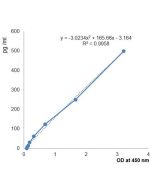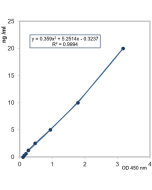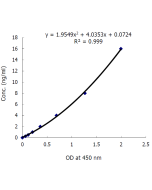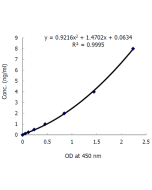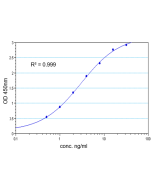Cookie Policy: This site uses cookies to improve your experience. You can find out more about our use of cookies in our Privacy Policy. By continuing to browse this site you agree to our use of cookies.
AdipoGen Life Sciences
Isthmin-1 (human) ELISA Kit
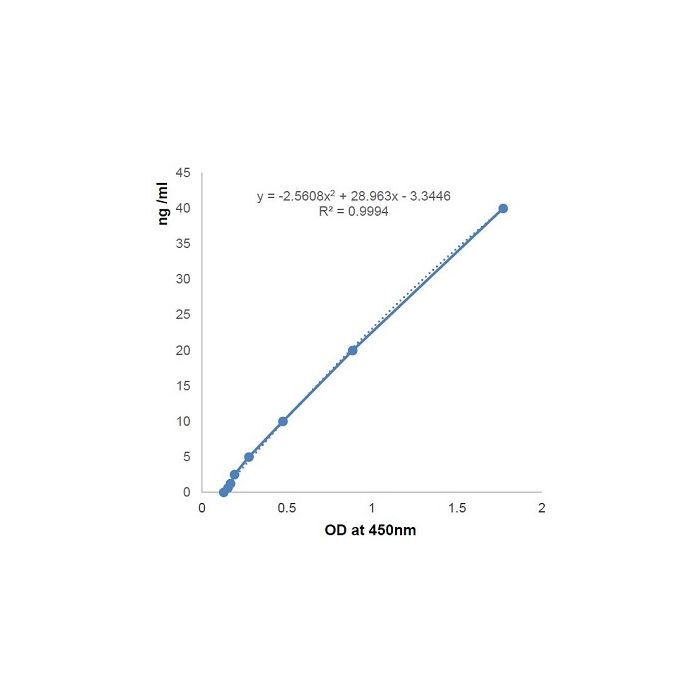
| Product Details | |
|---|---|
| Synonyms | C20orf82; ISM1; ISM |
| Product Type | Kit |
| Properties | |
| Application Set | Quantitative ELISA |
| Specificity |
Detects human Isthmin-1 in plasma and cell culture supernatant. It detects also mouse Isthmin-1 (very conserved). |
| Crossreactivity |
Human Mouse |
| Quantity |
1 x 96 wells |
| Sensitivity | 0.4 ng/ml |
| Range | 0.625 to 40ng/ml |
| Sample Type |
Cell Culture Supernatant Plasma |
| Assay Type | Sandwich |
| Detection Type | Colorimetric |
| Other Product Data |
UniProt link B1AKI9: Isthmin-1 (human) |
| Accession Number | B1AKI9 |
| RRID | AB_3095295 |
| Shipping and Handling | |
| Shipping | BLUE ICE |
| Short Term Storage | +4°C |
| Long Term Storage | +4°C |
| Handling Advice |
After standard reconstitution, prepare aliquots and store at -20°C. Avoid freeze/thaw cycles. Plate and reagents should reach room temperature before use. |
| Use/Stability | 12 months after the day of manufacturing. See expiry date on ELISA Kit box. |
| Documents | |
| Manual |
 Download PDF Download PDF |
| MSDS |
 Download PDF Download PDF |
| Product Specification Sheet | |
| Datasheet |
 Download PDF Download PDF |
Isthmin-1 (ISM1) was first identified as a gene expressed in the Xenopus midbrain-hindbrain organizer called the isthmus, with a proposed role during early brain development. Isthmin-1 encodes a predicted ~50kDa protein containing a signal peptide, a thrombospondin domain and an adhesion-associated domain. Isthmin-1 is important for embryonic and postnatal development. Growing evidence has shown that aberrant expression of Isthmin-1 can also affect the biological behavior of cancer. The Ism1 gene is conserved in mice and humans. A recent study showed that Isthmin-1 is an adipokine that induces glucose uptake in human and mouse adipocytes. Mature adipocytes secrete isthmin-1 and trigger a signaling cascade similar to that of insulin, regulating glucose uptake while suppressing lipid accumulation.
Recombinant Isthmin-1 or overexpression of Isthmin-1 causes a robust increase in GLUT4-dependent glucose uptake in cultured primary murine and immortalized human adipocytes as well as in primary human muscle cells and prevents insulin resistance and hepatic steatosis in a diet-induced obesity mouse model. Ablation of Isthmin-1 causes glucose intolerance and impaired insulin-stimulated adipocyte glucose uptake. Isthmin-1 suppresses de novo lipogenesis and increases protein synthesis in hepatocytes whereas Isthmin-1 knockdown in adipocytes reduces glucose uptake and insulin-dependent phosphorylation of protein kinase AKT at serine residue 473 (p-AKTSer473). Isthmin-1 signaling is dependent on PI3K and shares downstream phosphorylation targets with insulin signaling, such as p-AKTSer473, p-AKTThr308, p-ERK1/2Thr202/Tyr204 and p-S6Ser235/236. Isthmin-1 does not seem to act through the insulin receptor or the insulin-like growth factor 1 receptor; it is most likely to signal through another, yet-to-be-identified, receptor tyrosine kinase.
Isthmin-1 levels positively correlate with obesity in human plasma and are also associated with T cell depletion markers (PD-1, LAG-3, TIM-3 or CTLA-4), suggesting its use as a biomarker during immunotherapy.
- Circulating Isthmin-1 Levels and Their Relationship with Diabetes and Metabolic Diseases in Kuwaiti Adults: E. Alshawaf, et al.; Biomedicines 13, 101 (2025)






